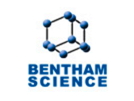Home > Press > Action of nanoparticles on platelet activation and plasmatic coagulation
 |
Abstract:
This article illustrates the mechanism and regulation of hemostasis, provides information on nanoparticle action on hemostasis and describes concept and limitations of in vitro assays in the assessment of nanoparticles.
Action of nanoparticles on platelet activation and plasmatic coagulation
Sharjah, U.A.E. | Posted on May 15th, 2016Hemostasis is a highly regulated process with key function for human life. The process is based on a rather complex interplay between endothelial cells, plasmatic coagulation and platelets. Deregulated hemostasis can result in life-threatening situations, such as massive thrombosis, profuse bleeding and disseminated intravascular coagulation. Various common diseases (e.g. cancer, diabetes, arteriosclerosis, etc.) are accompanied by impaired hemostasis, but hemostasis is also altered by exposure to nanoparticles.
Various new nanomaterials are being developed for medical diagnosis and therapy. An increase in nanomaterial research has led to an increase in animal testing, which is ethically and financially questionable. It is important to understand the mechanism of hemostasis and potential pro-inflammatory effects the nanoparticles might have on this process. There are several in vitro assays available that, according to the presented in vitro-in vivo comparisons, can identify adverse actions of nanoparticles on hemostasis. Particle producers should be aware of the advantages and limitations of specific in vitro assays for hemostasis and not restrict the testing of cytotoxicity. Use of in vitro assays allows the screening for new coating materials, which appear to be needed, because the commonly used polyethylene glycol was able to prevent interaction with clotting only by some particles. This article illustrates the mechanism and regulation of hemostasis, provides information on nanoparticle action on hemostasis in vitro and in vivo and describes concept and limitations of in vitro assays in the assessment of nanoparticles.
###
Eleonore Fröhlich
Center for Medical Research, Medical University Graz, Graz, Austria
####
For more information, please click here
Contacts:
Faizan ul Haq
Copyright © Bentham Science Publishers
If you have a comment, please Contact us.Issuers of news releases, not 7th Wave, Inc. or Nanotechnology Now, are solely responsible for the accuracy of the content.
| Related Links |
| Related News Press |
|
|
||
|
|
||
| The latest news from around the world, FREE | ||
|
|
||
|
|
||
| Premium Products | ||
|
|
||
|
Only the news you want to read!
Learn More |
||
|
|
||
|
Full-service, expert consulting
Learn More |
||
|
|
||








